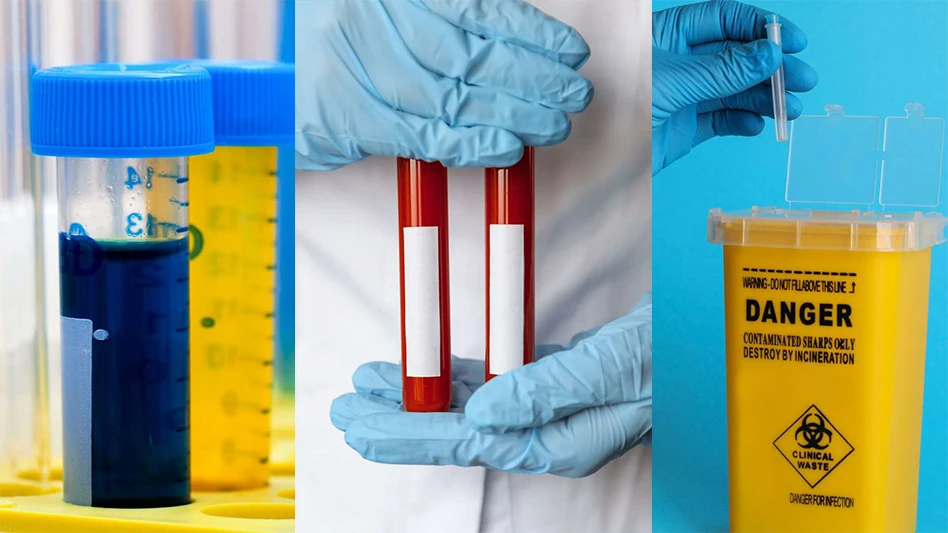
Polyfuze Graphics
There’s no doubt medical labels are vital for the medical device industry and without proper labeling, many devices simply wouldn’t be usable. Here are some ways labeling makes a difference for medical devices and the users.
Usage, warnings, information
One of the main benefits of medical device labeling is providing clear and precise instructions on how a device should be used. This allows medical personnel to pick up the device, check the label, and confirm the right way to use that device with minimal risk of errors or accidents that could harm them or a patient.
As well as instructions for use, medical device labels can also provide other key information, including warnings or alerts. Many medical devices could cause harm if used incorrectly, and labels often provide warning messages or symbols to let the user know about those dangers.
Labels also provide more information about a device, from the brand that made it to the lot number, serial number, expiration date, and more. This information can be useful if a company needs to recall a set of products due to a manufacturing fault.
Common mistakes in labeling
While medical labels have many uses and benefits, sometimes mistakes are made in producing medical device labels, and even a small mistake can make a label far less useful.
There are strict guidelines and requirements for how medical device labels should be made. In the U.S., the U.S. Food and Drug Administration (FDA) sets these rules and enforces them. However a label maker might accidentally fail to meet the requirements.
Medical device labels usually contain a lot of text, such as details about how the device should be used and information on what it contains or the company that made it. Text needs to be very clear and easy to read, but some labels are instead produced with unclear fonts – too decorative or bizarre to be clearly legible, or simply too big or small.
Another common mistake with label creation is when medical labels are made with poor visual design. They might have confusing or unclear elements, complex graphics, or layout problems making them difficult to understand. In addition, they might also be placed in a difficult spot on the device, blocking a certain button or interfering with use.
Medical devices are produced and used globally, so they may need to have text in multiple languages so different users and medical staff can clearly understand them. Sometimes, labels might be made in the wrong language or fail to provide multilingual messaging.
Steps to avoid mistakes
There are plenty of ways medical labels can go wrong due to issues such as poor font selection or oversight during the design phase. Luckily, there are also several ways to avoid these problems simply by paying closer attention and choosing the right methods and technologies for labeling needs.
Choose modern technologies: Nowadays, there are many ways in which labels can be made. They don't necessarily have to all be the same sticky labels used for years. There are exciting modern options such as polymer fusion labels, which can bond directly with the plastic of a medical device and stay in place forever. This kind of technology could be the best choice if you want to make clear, reliable, and truly permanent labels.
Follow regulatory requirements and standards: One of the best ways to avoid any problems when making medical industry labels is to be fully aware of and up to date with the latest guidelines from bodies such as the FDA. Strictly adhere to those guidelines when making any label because the slightest deviation could result in a label not fit for purpose and needs to be remade.
Comprehensive label design and placement: If you wish to make good quality medical labels that are reliable, functional, and in keeping with industry guidelines, the label design process must be thorough, paying close attention to every element from text layout to font style and size. In addition, think about where the label will be affixed on the device, choosing an area that won’t interfere with the device’s use.
Conduct usability testing: Finally, one of the best ways to ensure a product is ready to send out into the world is to test it, and the same logic applies to medical device labels. Carry out some usability tests of designed labels to see how well they work. Are they easy to see? Is the text clear and legible? Is all the necessary information present?
Conclusion
Medical device label design needs to be taken seriously to ensure devices have clear and legible labels on them. By finding a trusted labeling partner and following the steps above, it should be easier to avoid common labeling mistakes and get the labels you need.
Latest from Today's Medical Developments
- IMTS 2026 runs Sept. 14-19 at McCormick Place in Chicago, Illinois
- Master Bond’s MasterSil 800Med
- ZEISS celebrates 100 years of advancing innovation in the US
- Teleflex sells acute care and urology businesses for $2.03 billion
- HANNOVER MESSE: Where research and manufacturing meet
- What’s next for the design and manufacturing industry in 2026?
- Arcline to sell Medical Manufacturing Technologies to Perimeter Solutions
- Decline in German machine tool orders bottoming out





